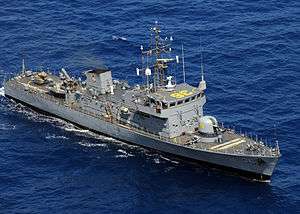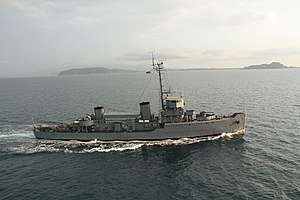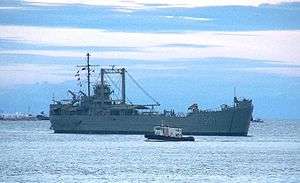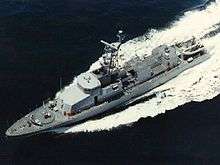List of equipment of the Philippine Navy
This is a list of equipment of the Philippine Navy, including current assets of the Philippine Fleet and the Naval Air Group (NAG), as well as those that are planned to be acquired. For the list of retired naval ships see List of decommissioned ships of the Philippine Navy.
Surface combatants
Jose Rizal frigate
Brand new frigates made by South Korea's Hyundai Heavy Industries based on the shipbuilder's HDF-2600 design, acquired under the Horizon 1 phase of the Revised AFP Modernization Program. The first ship BRP Jose Rizal was delivered in May of 2020 while the BRP Antonio Luna was initially scheduled to arrive by October 2020, though this may be delayed to 2021. The two ships of the class will become the most modern surface combatants of the Philippine Navy acquired to date. However, due to budgetary constraints set during initial stages of the acquisition project, the initial two ships of the class come "fitted for but not with" (FFBNW) several subsystems, including a Close-in Weapon System (CIWS), a Vertical Launching System (VLS), and a Towed Array Sonar System (TASS) as well as several electronic subsystems. These systems are planned to be acquired and installed at a later unspecified date.
Origin: ![]()
| Size | Performance | Armament | Other features |
|---|---|---|---|
| Displacement: 2,600 tons Length: 107.5 metres (353 ft) Complement: 65 + attached aircrew and boarding team |
Propulsion: Combined Diesel and Diesel (CODAD) Maximum speed: 25 knots (46 km/h; 29 mph) sustained Range: 4,500 nautical miles (8,300 km; 5,200 mi) |
1 × Oto Melara Super Rapid 76mm/62cal gun 1 × 30mm Aselsan SMASH RCWS 2 × 2 SSM-700K C-Star anti-ship missiles 2 × MBDA Simbad-RC twin launchers for MBDA Mistral ship-to-air missiles 2 × triple SEA TLS-TT torpedo launchers for LIG Nex1 K745 Blue Shark torpedoes 4 × S&T Motiv 12.7mm K6 heavy machine guns |
Aviation: 1 x AW-159 Wildcat Radar: Hensoldt TRS-3D Baseline D 3D air/surface search radar Sonar: Harris Model 997 medium frequency active/passive hull mounted |
| Name | Pennant number | Commissioned | Unit | Notes |
|---|---|---|---|---|
| Jose Rizal | FF-150 | - | Offshore Combat Force | Commisioning on June 19 2020. |
| Antonio Luna | FF-151 | - | Offshore Combat Force | Post-launch fitting ongoing. |
Pohang class corvette
Korean-designed general purpose corvettes made originally for the Republic of Korea Navy, which were then transferred to several friendly countries including the Philippines. Designed for coastal defense and anti-submarine operations. Being utilized by the Philippine Navy for anti-submarine warfare (ASW) training in preparation for transition to the new frigates being built in South Korea for the Philippine Navy. More units are expected to be requested for transfer, as the ROKN retires several more.
Origin: ![]()
| Size | Performance | Armament | Other features |
|---|---|---|---|
| Displacement: 1,200 tons Length: 88.3 metres (290 ft) Complement: 95 |
Propulsion: Combined Diesel or Gas (CODOG) Maximum speed: 32 knots (59 km/h; 37 mph) Range: 4,000 nautical miles (7,400 km; 4,600 mi) at 15 knots |
2 × Oto Melara Compact 76mm/62 caliber gun 2 × Otobreda Twin 40mm/70 caliber guns 2 × triple Mark 32 torpedo tubes 2 × Depth Charge Racks for 12 Mark 9 Depth Charges 4 × Browning M2HB .50 caliber heavy machine guns |
Aviation: None Radar: Raytheon AN/SPS-64(V)5B surface search radar Sonar: Raytheon AN/SQS-58 hull mounted |
| Name | Pennant number | Commissioned | Unit | Notes |
|---|---|---|---|---|
| Conrado Yap | PS-39 | 5 August 2019 | Offshore Combat Force | |
Del Pilar class offshore patrol vessel
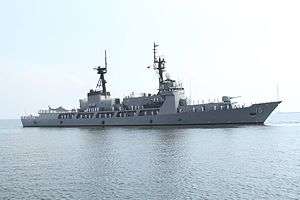
Formerly US Coast Guard cutters of the Hamilton-class, granted to the Philippine Navy as part of US Military Assistance Program. The first ship BRP Gregorio del Pilar was handed over by the US Coast Guard to the Philippine Navy on 13 May 2011, and commissioned on 14 December 2011. Currently the 3 ships of the class are the most capable surface combatants of the Philippine Navy, and are being used to train the organization on modern warship operations in preparation for future new assets being acquired under the Revised AFP Modernization Program. The class will undergo sensor upgrades, with the US government providing SAAB AN/SPS-77 Sea Giraffe AMB 3D air/surface search radars,[1] FLIR Systems SEAFLIR 230 electro-optical/infra-red (EO/IR) system, and BAE Systems Mark 38 Mod.2 25mm gun systems under FMS & FMF programs. A separate upgrade program funded by the Philippine Navy will see the introduction of a new Combat Management System, Electronic Support Measures (R-ESM), and Hull Mounted Sonar (HMS).[2]
Origin: ![]()
| Size | Performance | Armament | Other features |
|---|---|---|---|
| Displacement: 3,250 tons Length: 115.2 metres (378 ft) Complement: 85 + attached aircrew and boarding team |
Propulsion: Combined Diesel or Gas (CODOG) Maximum speed: 29 knots (54 km/h; 33 mph) Range: 14,000 nautical miles (26,000 km; 16,000 mi) |
1 × Oto Melara Compact Mark 75 76mm/62 caliber gun 2 × 25mm Mark 38 Mod.2 or Mod.3 Typhoon autocannon system (only on PS-15 & PS-16) 1 × 25mm Mark 38 Mod.1 Bushmaster autocannon (only on PS-15) 6 × Browning M2HB .50 caliber heavy machine guns |
Aviation: 1 x AW109E Power Radar: Kelvin Hughes SharpEye X & S-band radar (on PS-15 & PS-16), Furuno FAR 3220BB X & S-band radar (on PS-17) Sonar: None |
| Name | Pennant number | Commissioned | Unit | Notes |
|---|---|---|---|---|
| Gregorio del Pilar | PS-15 | 14 December 2011 | Offshore Combat Force | Current flagship of the Philippine Navy |
| Ramon Alcaraz | PS-16 | 22 November 2013 | Offshore Combat Force | |
| Andres Bonifacio | PS-17 | 21 July 2016 | Offshore Combat Force | |
Jacinto class offshore patrol vessel
Former Peacock-class patrol vessel patrol vessels of the Royal Navy's Hong Kong Squadron until they were sold to the Philippines in 1997 upon the hand-over of Hong Kong to the Chinese government. They were first commissioned between 1983 and 1984, simply designed and are tropicalized for operations in the Asia.[3][4] The ships underwent several phases of upgrades undertaken by the Philippine Navy, with the first one completed in 2005 replacing the old radar and navigation systems. The second upgrade involved the improvements on its marine engineering systems, and a third upgrade included the improvement of combat systems.[5][6]
Origin: ![]()
| Size | Performance | Armament | Other features |
|---|---|---|---|
| Displacement: 712 tons full load Length: 62.6 metres (205 ft) Complement: 31 |
Propulsion: Diesel Engines Maximum speed: 25 knots (46 km/h; 29 mph) Range: 2,500 nautical miles (4,600 km; 2,900 mi) at 17 knots |
1 × Oto Melara Compact 76mm/62 caliber gun 1 × MSI Defence Seahawk 20mm autocannon system 2 × Mark 16 20mm guns 2 × Browning M2HB .50 caliber heavy machine guns |
Aviation: None Radar: GEM Eletronicca Sea Eagle X & S-band radar (on PS-35), Kelvin Hughes SharpEye X & S-band radar (on PS-36 & PS-37) Sonar: None |
| Name | Pennant number | Commissioned | Unit | Notes |
|---|---|---|---|---|
| Emilio Jacinto | PS-35 | 4 August 1997 | Offshore Combat Force | |
| Apolinario Mabini | PS-36 | 4 August 1997 | Offshore Combat Force | |
| Artemio Ricarte | PS-37 | 4 August 1997 | Offshore Combat Force | |
Malvar class offshore patrol vessel
%2C_Tabawan_2009-06-27.jpg)
The ships making up this class actually came from different classes of former US Navy ships using a common hull: Admirable-class minesweepers, PCE-842-class patrol craft escorts, and PCE(R)-842-class rescue patrol craft escorts. The ships were handed over by the US government as part of Military Assistance, either directly to the Philippines becoming the first major surface combatants of the newly formed post-war Philippine Navy, or to the South Vietnamese government. Several of those given to South Vietnam eventually were absorbed with the Philippine Navy upon their escape during the end of the Vietnam War.[3][4] Considered the oldest active warship of the Philippine Navy and in the world, BRP Pangasinan serving the fleet for 70 years. Several units were already decommissioned or lost through the years, although 3 ships are still in active service with the Offshore Combat Force. These ships are expected to be replaced soon, once the Philippine Navy commissions newer ships along the acquisition pipeline between 2018 and 2022.[7]
Origin: ![]()
| Size | Performance | Armament | Other features |
|---|---|---|---|
| Displacement: 914 tons full load Length: 56.2 metres (184 ft) Complement: 85 |
Propulsion Diesel Engines Maximum speed: 16 knots (30 km/h; 18 mph) or even less Range: 6,600 nautical miles (12,200 km; 7,600 mi) at 11 knots |
1 × Mark 22 3"/50 caliber guns 3 × Bofors Mark 3 40mm/60 caliber or 3 × Bofors Mark 1 Twin 40mm/60 caliber anti-aircraft guns 4 × Oerlikon Mark 10 20mm/70 caliber guns 4 × Browning M2HB .50 caliber heavy machine guns |
Aviation: None Radar: Furuno or Kelvin Hughes X & S-band surface search radar Sonar: None |
| Name | Pennant number | Commissioned | Unit | Notes |
|---|---|---|---|---|
| Miguel Malvar | PS-19 | 7 February 1977 | Offshore Combat Force | |
| Magat Salamat | PS-20 | 7 February 1977 | Offshore Combat Force | |
| Pangasinan | PS-31 | 2 July 1948 | Offshore Combat Force | 70 years in service |
| Eight additional ships (Datu Tupas, Datu Marikudo, Cebu, Negros Occidental, Leyte, Iloilo, Samar, and Sultan Kudarat) retired from service | ||||
Rizal class offshore patrol vessel
Formerly Auk-class minesweepers used by the US Navy during World War II, and was among the ships provided by the US government to allies after the war. The Philippine Navy received 2 ships starting in 1965. Considered among the oldest active warships of the Philippine Navy, and also among the oldest in the world.[3][4] These ships are expected to be replaced soon, once the Philippine Navy commissions newer ships along the acquisition pipeline between 2018 and 2022.[7]
Origin: ![]()
| Size | Performance | Armament | Other features |
|---|---|---|---|
| Displacement: 1,250 tons full load Length: 67.41 metres (221.2 ft) Complement: 80 + attached boarding team |
Propulsion Diesel Engines Maximum speed: 20 knots (37 km/h; 23 mph) Range: 5,000 nautical miles (9,300 km; 5,800 mi) at 14 knots |
2 × Mark 22 3"/50 caliber guns 2 × Bofors Mark 1 Twin 40mm/60 caliber anti-aircraft guns 2 × Oerlikon Mark 4 20mm/70 caliber guns 4 × Browning M2HB .50 caliber heavy machine guns |
Aviation: None Radar: Raytheon AN/SPS-64(V)11 surface search radar Sonar: None |
| Name | Pennant number | Commissioned | Unit | Notes |
|---|---|---|---|---|
| Quezon | PS-70 | 19 August 1967 | Offshore Combat Force | |
| Another ship, Rizal, was retired from service. | ||||
Amphibious Warfare Vessels
Tarlac class landing platform dock
New Indonesian-made landing platform docks, current the Philippine Navy's foremost amphibious warfare platform and its first major brand new ship acquisition since the 1990s. It was acquired under the "Strategic Sealift Vessel" project and was based on the Indonesian Makassar-class landing platform dock. The ships can carry up a Philippine Marine Battalion Landing Team (MBLT) with up to 500 fully armed marines and their vehicles and equipment, and carries two small landing craft utilities (LCU) with it. It has a helicopter deck capable of accommodating 2 12-ton helicopters, as well as a hangar for 1 helicopter.[8] The ships are expected to be installed with additional weapons and improved sensor systems.[9] More are being planned for acquisition with slightly modified designs, under the Philippine Navy's RAFPMP Horizon 2 modernization program.[10]
Origin: ![]()
| Size | Performance | Armament | Other features |
|---|---|---|---|
| Displacement: 11,583 tons full load Length: 123 metres (404 ft) Complement: 121 + attached aircrew 500 Marines |
Propulsion: Combined Diesel and Diesel (CODAD) Maximum speed: 16 knots (30 km/h; 18 mph) Range: 9,360 nautical miles (17,330 km; 10,770 mi) |
8 × Browning M2HB .50 caliber heavy machine guns | Aviation: 2-spot helicopter deck Boats Carried: 2 × LCU in well deck 2 × RHIB at boat davits Vehicle Deck: 2,800 tons of vehicles & cargo inc. 4 × AAVs |
| Name | Pennant number | Commissioned | Unit | Notes |
|---|---|---|---|---|
| Tarlac | LD-601 | 1 June 2016 | Sealift Amphibious Force | |
| Davao del Sur | LD-602 | 31 May 2017 | Sealift Amphibious Force | |
Bacolod City class logistics support vessel
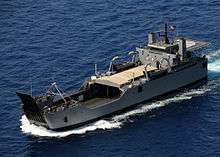
The Bacolod City-class is the Philippine Navy's main amphibious operation platform prior to the delivery of the Tarlac-class LPD. The two ships were acquired through US Foreign Military Sales (FMS) program. A contract for two ships was announced by Trinity Marine on 3 April 1992, with an option for a third ship which was not taken up. The design was based on a modified version of the US Army's General Frank S. Besson-class LSV, but without accommodation for 150 troops using the space originally for the stern ramp, and the addition of a small helicopter deck. The ship is used in a similar fashion as a Landing Ship-Tank, able to land troops and equipment directly to the beach.[3][11]
Origin: ![]()
| Size | Performance | Armament | Other features |
|---|---|---|---|
| Displacement: 4,265 tons full load Length: 83 metres (272 ft) Complement: 30 150 Marines |
Propulsion: Diesel Engines Maximum speed: 12 knots (22 km/h; 14 mph) Range: 8,300 nautical miles (15,400 km; 9,600 mi) |
2 × Oerlikon Mark 4 20mm/70 caliber guns 4 × Browning M2HB .50 caliber heavy machine guns |
Aviation: 1-spot helicopter deck Boats Carried: 2 × LCVP at boat davits Vehicle Deck: 2,280 tons of vehicles & cargo |
| Name | Pennant number | Commissioned | Unit | Notes |
|---|---|---|---|---|
| Bacolod City | LS-550 | 1 December 1993 | Sealift Amphibious Force | |
| Dagupan City | LS-551 | 5 April 1994 | Sealift Amphibious Force | |
LST-1/LST-542 class landing ship tank
Former US Navy landing ships-tank that served during World War II, and transferred to numerous countries including the Philippines. The Philippine Navy received its first ships of the class on 30 December 1946, and has received almost 30 units between 1946 and 1976. Some of those that were received came through South Vietnam as several ships were absorbed by the Philippine Navy upon their escape at the end of the Vietnam War.[3] One of the ships, BRP Sierra Madre is technically retired from service, but was deliberately grounded at Ayungin Shoal and is treated as an active ship despite being modified as a semi-permanent structure and outpost to a few Philippine Marines stationed in the contested territory.[12] Some of the ships were also used as helicopter platforms, stationing utility helicopters from the Philippine Air Force in several occasions, including during tensions with China in the Mischief Reef in 1995.[13]
Origin: ![]()
| Size | Performance | Armament | Other features |
|---|---|---|---|
| Displacement: 4,080 tons full load Length: 100 metres (330 ft) Complement: 110 200 Marines |
Propulsion: Diesel Engines Maximum speed: 10 knots (19 km/h; 12 mph) Range: 24,000 nautical miles (44,000 km; 28,000 mi) |
2 × Bofors Mark 1 Twin 40mm/60 caliber anti-aircraft guns 4 × Bofors Mark 1 40mm/60 caliber anti-aircraft guns 8 × Oerlikon Mark 4 20mm/70 caliber guns 4 × Browning M2HB .50 caliber heavy machine guns |
Aviation: main open deck can be used as 2-spot helicopter deck Boats Carried: 2 × LCVP at boat davits Vehicle Deck: 2,100 tons of vehicles & cargo |
| Name | Pennant number | Commissioned | Unit | Notes |
|---|---|---|---|---|
| Laguna | LS-501 | 13 September 1976 | Sealift Amphibious Force | |
| Benguet | LS-507 | 13 September 1976 | Sealift Amphibious Force | |
| Sierra Madre | LS-57 | 5 April 1976 | - | Outpost at Ayungin / Second Thomas Shoal |
| At least twenty five (25) other ships of the class were retired from service (refer to List of decommissioned landing ships-tank of the Philippine Navy for full list). | ||||
Littoral Warfare Vessels
Cyclone class littoral patrol vessel
The Cyclone class are actually US Navy inshore patrol ships currently being used by the United States Naval Special Warfare Command for low intensity conflict environment. The Philippine Navy's ship is actually the lead class, formerly the USS Cyclone (PC-1), and was transferred at a time when the US Special Operations Command rejected the class for being too big for commando missions, while the Navy Fleet found them too small for patrol and combat missions. After transferring USS Cyclone, the US Navy revised its plans and intended to keep the remaining ships of the fleet. The Philippine Navy has made it known in the past that they are interested in more units if the US intends to retire some other ships of the class.
Origin: ![]()
| Size | Performance | Armament | Other features |
|---|---|---|---|
| Displacement: 357 tons full load Length: 51.9 metres (170 ft) Complement: 28 |
Propulsion: Diesel Engines Maximum speed: 35 knots (65 km/h; 40 mph) Range: 2,900 nautical miles (5,400 km; 3,300 mi) |
1 × Mark 38 Mod.1 Bushmaster 20mm autocannon 1 × Mark 96 Mod. 0 Bushmaster 20mm autocannon with Mark 19 Mod.3 40mm automatic grenade launcher 6 × Browning M2HB .50 caliber heavy machine guns 2 × M60 7.62mm general purpose machine gun |
Aviation: None Radar: Sperry Marine RASCAR 3400C surface search radar Sonar: Wesmar side-scanning hull-mounted |
| Name | Pennant number | Commissioned | Unit | Notes |
|---|---|---|---|---|
| General Mariano Alvarez | PS-38 | 8 March 2004 | Offshore Combat Force | |
Kagitingan class littoral patrol craft
Originally designed and built in Germany, the Kagitingan class was supposed to be built in numbers in the Philippines after the initial unit. It was reported that the ships did not reach their potential design and were underpowered and problematic, and were retired in the 1990s but was pressed again to serve due to lack of operating naval assets. Out of four, only 2 ships of the class remain and are expected to be retired from service as more new assets become available.
Origin: ![]()
| Size | Performance | Armament | Other features |
|---|---|---|---|
| Displacement: 160 tons full load Length: 37 metres (121 ft) Complement: 30 |
Propulsion: Diesel Engines Maximum speed: 21 knots (39 km/h; 24 mph) Range: 2,300 nautical miles (4,300 km; 2,600 mi) |
1 × Emerlec EX-31 30mm twin guns (only on PB-102) 1 × Bofors Mark 3 40mm/60 caliber gun (only on PB-104) 4 × Browning M2HB .50 caliber heavy machine guns 2 × M60 7.62mm general purpose machine gun |
Aviation: None Radar: Furuno navigation radar Sonar: None |
| Name | Pennant number | Commissioned | Unit | Notes |
|---|---|---|---|---|
| Bagong Lakas | PB-102 | 9 February 1979 | Littoral Combat Force | |
| Bagong Silang | PB-104 | June 1983 | Littoral Combat Force | |
| Two additional ships (Kagitingan and Katapangan) retired from service | ||||
Tomas Batilo class fast assault craft
_20120708.jpg)
Originally from South Korea and are known as the Chamsuri-class patrol killer medium (PKM-200 series) fast attack craft. These boats were designed for coastal patrol against North Korean patrol boats. 8 were handed-over to the Philippine Navy starting 1995. Designed and built by Korea Tacoma Shipyard in South Korea from the late 1970s, these boats are heavily armed for their size as their intention is to overwhelm similar-sized boats with heavy firepower. Armaments and fit-out differ on several boats, both due to modifications made by the Republic of Korea Navy based on batches and due to changes made by the Philippine Navy over the years to fit their requirement. Some of the boats were already retired as the Philippine Navy undergo modernization and acquisition of new replacements.
Origin: ![]()
| Size | Performance | Armament | Other features |
|---|---|---|---|
| Displacement: 144 tons full load Length: 37 metres (121 ft) Complement: 31 |
Propulsion: Diesel Engines Maximum speed: 33 knots (61 km/h; 38 mph) Range: 600 nautical miles (1,100 km; 690 mi) @ 20 knots |
1 × Emerlec EX-31 30mm twin guns or 1 × Bofors Mark 3 40mm/60 caliber gun 2 × Oerlikon Mark 4 20mm/70 caliber guns 4 × Browning M2HB .50 caliber heavy machine guns |
Aviation: None Radar: Furuno or Koden MDC 1500 navigation/surface search radar Sonar: None |
| Name | Pennant number | Commissioned | Unit | Notes |
|---|---|---|---|---|
| Boni Serrano | PB-111 | 22 May 1996 | Littoral Combat Force | |
| Salvador Abcede | PB-114 | 22 May 1996 | Littoral Combat Force | |
| Emilio Liwanag | PB-118 | 15 April 2011 | Littoral Combat Force | |
| Five additional ships (Tomas Batilo, Bienvenido Salting, Ramon Aguirre, Nicolas Mahusay, and Dionisio Ojeda) retired from service | ||||
Patrol and Support Vessels
| Class | Photo | Type | Name | Origin | Notes |
|---|---|---|---|---|---|
| Patrol Craft | |||||
| Jose Andrada class |  | Coastal patrol craft | BRP Jose Andrada BRP Enrique Jurado BRP Alfredo Peckson BRP Simeon Castro BRP Carlos Albert BRP Heracleo Alano BRP Liberato Picar BRP Hilario Ruiz BRP Rafael Pargas BRP Nestor Reinoso BRP Dioscoro Papa BRP Ismael Lomibao BRP Leovigildo Gantioqui BRP Federico Martir BRP Filipino Flojo BRP Anastacio Cacayorin BRP Manuel Gomez BRP Teotimo Figoracion BRP Jose Loor Sr. BRP Juan Magluyan BRP Florencio Inigo BRP Felix Apolinario | ||
| Alberto Navarette class | .jpg) | Coastal patrol craft | BRP Alberto Navarette (PC-394) BRP Abraham Campo (PC-396) | Ex-US Coast Guard Point-class cutters. | |
| Fast Assault Interdiction Craft / Patrol Boats | |||||
| Multi-Purpose Attack Craft |  | Assault Boats Missile Boats Assault Boats | BA-482 BA-483 BA-484 BA-485 BA-486 BA-487 BA-488 BA-489 BA-491 BA-492 BA-493 BA-494 | Designed to deploy up to 16 Marines directly on the beach. Those commissioned in 2019 are still awaiting their missile and RCWS armaments.[14][15] | |
| De Havilland 9209-class patrol craft | Patrol Boats | PB-320[16] PB-321[17] PB-322[18] PB-323[19] |
[20] | ||
| Swift Mk.3-class | Patrol Boats | PB-333[21] PB-336[22] PB-338[23] PB-339[24] PB-340[25] PB-341[26] PB-343[27] PB-348[28] PB-349[29] PB-350[30] PB-351[31] PB-352[32] PB-353[33] PB-354[34] | Former US Navy Swift Mk.3 fast patrol crafts. Some units were transferred to Philippine Coast Guard (PCG).[35] | ||
| Type 966Y | 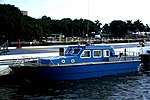 | Patrol Boats | PB-356 PB-357 PB-358 PB-359 | Four patrol craft donated by the Chinese government, formally received July 27, 2018.[36][37] | |
| Rigid-Hulled Inflatable Boat | |||||
| Rigid-hulled inflatable boats |  | RHIB | unknown | Numerous, from different sources and in different sizes. | |
| Landing Crafts | |||||
.jpg) | Large landing craft utility | BRP Tagbanua | BRP Tagbanua is the largest Philippine-made naval vessel launched to date. Size is similar to the Landing Craft Heavy although it was classified as an LCU. | ||
_new.jpg) | Landing craft utility | BRP Manobo (AT-297) | BRP Manobo is a new ship, replacing an original Mk. 6 LCU with the same hull number and name although the design is different. | ||
| Ivatan class | 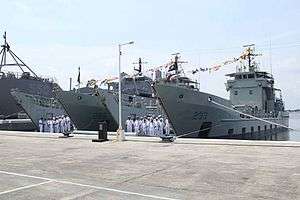 | Landing craft heavy | BRP Ivatan BRP Batak BRP Waray BRP Iwak BRP Agta | Former RAN Balikpapan-class ships.[38][39] | |
| LCU Mk.6 class |  | Landing craft utility | BRP Subanon (AT-291) BRP Bagobo (AT-293) BRP Tausug (AT-295) | Former US Mk. 6 LCU. | |
| Riverine utility craft | 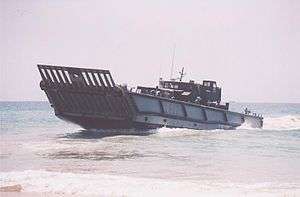 | Utility craft | VU-102 VU-103 VU-106 VU-469 VU-471 | Unknown | [40] |
 | Small Landing Craft Utility | LC-601-1 LC-601-2 LC-602-1 LC-602-2 | Integral LCU of the BRP Tarlac (LD-601) and BRP Davao del Sur (LD-602), each two vessels delivered and commissioned together with Tarlac-class landing platform dock, respectively. | ||
| Auxiliary Ships | |||||
.jpg) | Presidential yacht | BRP Ang Pangulo | |||
.jpg) | Research vessel | BRP Gregorio Velasquez (AGR-702) | Former UNOLS R/V Melville. | ||
 | Survey vessel | BRP Fort San Antonio (AM-700) BRP Fort Abad (AM-701) | [41] | ||
.jpg) | Coastal freighter | BRP Mangyan | Ex-US Army and ex-USN FS-524. | ||
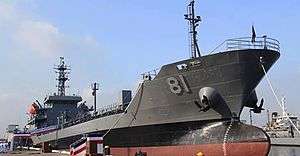 | Replenishment tanker | BRP Lake Caliraya | One of the three former oil tankers from the Philippine National Oil Corporation.[42] Two more undergoing refurbishing prior to commissioning. | ||
| Fuel tanker | BRP Lake Buhi (AF-78) | Ex-USN YO-78/YOG-73 gasoline barge. | |||
| Water tanker | BRP Lake Buluan (AW-33) | Similar to Lake Mainit class. | |||
| Small harbor tug | (YT-225) BRP Ilonggot (YT-226)BRP Tasaday YT-227 YT-228 YT-273 | Ex-US YTL-572 small harbor tug. ex-US YTL-425 small harbor tug[41] | |||
| Miscellaneous Surface Assets | |||||
| Floating Cranes | Crane vessel | YU-207[43] YU-206 YU-205 YU-204 | Built by Todd Shipyards in Seattle Washington, 140 feet 1,407 t derrick barge built for US Navy in 1952 as YD-191 and sold 1980 to PN[44][45] | ||
| AFDL-1-class | Floating Drydock | YD-200 YD-204 YD-205 | Former US small auxiliary floating drydocks. YD-200 transferred in 1948, YD-204 purchased in 1980. YD-205 loaned in 1969, purchased in 1980.[46][47][48] | ||
Naval Air Wing
| Aircraft | Photo | Origin | Role | Version | Quantity | Notes |
|---|---|---|---|---|---|---|
| Fixed-wing Aircraft | ||||||
| Beechcraft King Air | 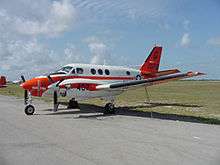 |
Maritime patrol aircraft | C-90 | 5 | Former JMSDF trainers transferred to the Naval Air Group as Maritime patrol aircraft with 4 units ISR capability and 1 Unit as Cargo.[49] | |
| BN-2 Islander | 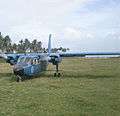 |
Maritime patrol aircraft / Light transport aircraft | BN-2A | 5[50] | ||
| Cessna 172 Skyhawk |  |
Trainer / Light utility aircraft | 172F[51] 172N[51] |
1 2 |
||
| Helicopters | ||||||
| AgustaWestland AW159 | 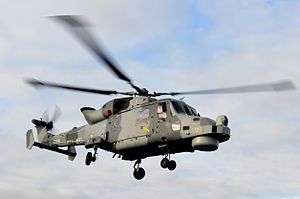 |
Anti-Submarine Warfare | AW159 | 2 | Delivered in 2019.[52] | |
| AgustaWestland AW109 |  |
Multi-purpose naval helicopter | AW-109E Power | 5 | 3 units equipped with FN RMP (Rocket Machine Gun Pod) designated to each of the Gregorio del Pilar-class Frigates, while the other two are used for interim shipborne operations on Tarlac-class LPDs. | |
| MBB Bo 105 |  |
Utility helicopter | Bo 105C | 3[50] | ||
| Robinson R22 |  |
Training helicopter | R22 Beta II[51] | 2[51] | ||
Ship Weapon Systems
Guns
- Oto Melara 76mm/62 caliber Compact gun
- Mark 75 turret: on Pohang, Del Pilar and Jacinto-classes
- Mark 22 3"/50 caliber gun
- Mark 22 mount: on Rizal and Malvar-classes/
- Bofors 40mm L/70 gun
- Otobreda 40mm/70 caliber twin gun: on Pohang-class
- Bofors Mark 1 40mm L/60 gun
- Mark 1 twin mount: on Rizal, Malvar, and LST-1/LST-542-classes
- Mark 3 Mod.0 single mount: on Rizal, Malvar, LST-1/LST-542, Kagitingan, and Tomas Batillo-classes
- Oerlikon KCB 30mm/75 gun
- Emerlec-30 twin mount: on Tomas Batillo-class (being retired)
- M242 Bushmaster 25mm gun
- BAE Mark 38 Mod.1 25mm stabilized mount: on Del Pilar, Cyclone, and Jose Andrada-classes
- BAE Mark 38 Mod.2 25mm Typhoon RCWS: on Del Pilar-class
- BAE Mark 38 Mod.3 25mm Typhoon RCWS: on Del Pilar-class
- BAE Mark 98 Mod.0 25mm stabilized mount: on Cyclone-class
- MSI Defence Seahawk DS25 RCWS: on Jacinto-class
- Oerlikon Mark 4 20mm/70 caliber gun
- Mark 10 single mount
- Mark 24 twin mount
- Mark 16 20mm gun
- Mark 67 mount: on Del Pilar and Jacinto-classes
- GE M61 Vulcan 20mm gatling gun
- Mark 58 Mod.3K Sea Vulcan turret: on Tomas Batillo-class (being retired)
- M2 Browning 12.7mm heavy machine gun
- Mini Typhoon RCWS: on MPAC Mark 3
- Mark 56 mount: on all ships
Missiles and Torpedoes
- Rafael Spike-ER short range surface-to-surface missiles
- Typhoon MLS-ER missile launcher on MPAC Mk. 3 assault boats
- K745 Chung Sang Eo (Blue Shark) torpedoes
- Mk. 32 triple torpedo launchers on Pohang-class
- Helicopter-mounted torpedo launchers on AW-159 Wildcat naval helicopters
For New Ships and Aircraft, the Navy Acquired:
- Oto Melara 76mm Super Rapid Gun
- Aselsan SMASH 30mm remote weapon system
- Spike NLOS surface-to-surface missiles
- Mistral missiles in Simbad RC system
- SSM-700K Haeseong anti-ship missiles
- TLS-TT Shipboard Triple Torpedo Launching System
Future Ships
| Class | Photo | Type | Ships | Origin | Quantity | Notes |
|---|---|---|---|---|---|---|
| Corvette | Corvette | 2 | With ABC of 28 Billion pesos, DND decided that it would be a Gov't to Gov't transaction with the proponent going to South Korea for a soft loan agreement. Only awaiting for funds for the downpayment. | |||
| Offshore Patrol Vessel | Offshore Patrol Vessel | 6 | With ABC of 30 Billion pesos, DND decided that it would be a Gov't to Gov't transaction with the proponent going to Australia for a soft loan agreement. Only awaiting funds for the downpayment. | |||
| Fast attack craft | Fast attack craft | 8 | With ABC of 10 Billion pesos, DND decided that it would be a Gov't to Gov't transaction with the proponent going to Israel along with a transfer of technology agreement. They have chosen the Shaldag V with 4 boats to be built in Israel while the remaining 4 boats will be built in the Philippines. The government approves its initial funding as apart of Multi-Year Contracting Allocation, the contract between PN and Israel Shipyard will be signed this year(2020). | |||
| Landing Platform Dock | Landing Platform Dock | 2 | With ABC of 5 Billion pesos,The Philippine Navy released a requirement for two more LPDs which are believed to be improvements over the Tarlac-class. Tender currently ongoing, which PT-PAL Passed post Qualification for the project.[53] | |||
See also
References
- Dominguez, Gabriel (21 May 2018). "Philippine Navy to receive Saab's Sea Giraffe AMB radar". IHS Jane's Defence Weekly. Retrieved 21 October 2018.
- MaxDefense Philippines 23 May 2018
- Saunders, Stephen (2004). Jane's Fighting Ships 2004–2005 (107th ed.). Jane's Information Group Ltd.
- Wertheim, Eric (2007). The Naval Institute Guide to Combat Fleets of the World (15th ed.). Naval Institute Press. p. 552. ISBN 9781591149552.
- Montero, Max (14 March 2016). "Propmech and Saab Wins Philippine Navy's Jacinto-class Patrol Vessel Upgrade Phase 3B Project". MaxDefense Philippines. Retrieved 21 October 2018.
- Montero, Max (21 October 2015). "Updates on the Sensors, Fire Control System, and Weapon Systems Upgrade of the Philippine Navy's Jacinto-class Vessels". MaxDefense Philippines. Retrieved 21 October 2018.
- Montero, Max (17 October 2018). "More Details on the Philippine Navy's Horizon 2 Offshore Patrol Vessel Project after ADAS 2018". MaxDefense Philippines. Retrieved 21 October 2018.
- Montero, Max (30 May 2016). "Discussing the Philippine Navy's First SSV, the Tarlac-class Landing Platform Dock". MaxDefense Philippines. Retrieved 21 October 2018.
- Ridzwan Rahmat (13 July 2015). "PT PAL outlines weapons fit for Philippine Navy SSVs". Archived from the original on 8 December 2015. Retrieved 2 December 2015.
- MaxDefense Philippines 2 October 2018
- "Frank S Besson Class". Naval Technology. Retrieved 21 October 2018.
- Mogato, Manuel (14 July 2015). "Exclusive: Philippines reinforcing rusting ship on Spratly reef outpost – sources". Reuters. Retrieved 21 October 2018.
- Associated Press (1995). "Spratly Islands – China/Philippines 'Incident' – 1995". AP Archives. Retrieved 21 October 2018.
- "Filipino, Taiwanese firms to build missile platform Attack Crafts of Navy". Update Philippines. 2016-02-15. Retrieved 2015-05-17.
- "Philippine Navy hopes to get 16 more AAVs, 12 fast attack craft". Philippine Daily Inquirer. 2019-09-23. Retrieved 2019-09-23.
- DefensePH PB-320
- DefensePH PB-321
- DefensePH PB-322
- DefensePH PB-323
- "Australian, fiberglass de Havilland class patrol craft". Timawa.net. Retrieved 2011-01-07.
- DefensePH PB-333
- DefensePH PB-336
- DefensePH PB-338
- DefensePH PB-339
- DefensePH PB-340
- DefensePH PB-341
- DefensePH PB-343
- DefensePH PB-348
- DefensePH PB-349
- DefensePH PB-350
- DefensePH PB-351
- DefensePH PB-352
- DefensePH PB-353
- DefensePH PB-354
- "Philippine Navy". Timawa.net. Archived from the original on 2010-06-11. Retrieved 2010-03-18.
- "Upcoming Tranche of Security Aid from China to the Philippines Revealed". MaxDefense Philippines. 2017-08-17. Retrieved 2018-07-30.
- "IN PHOTOS: PH Navy gets patrol boats from China". Inquirer.net. 2018-07-30. Retrieved 2018-07-30.
- "Australia's gift to PH Navy: 2 supply ships". Rapller. 2015-01-29. Retrieved 2015-01-29.
- Bulletin, The Manila. "PH Navy gets three ships from Australia". mb.com.ph. Retrieved 2016-05-31.
- "Riverine Utility Craft". Timawa.net. Retrieved 2010-01-07.
- http://i53.photobucket.com/albums/g56/adroth92/description.jpg
- Diola, Camille (25 May 2015). "Philippine Navy adds first oil tanker to fleet". The Philippine Star. Retrieved 26 May 2015.
- DefensePH YU-207
- "Archived copy". Archived from the original on 2014-12-21. Retrieved 2015-05-19.CS1 maint: archived copy as title (link)
- "YU-207, ex-US 60-ton capacity floating crane". Timawa.net. Retrieved 2010-01-07.
- "YD-200". Defense of the Republic of the Philippines. 2017-11-14. Retrieved 2019-08-09.
- DefensePH YU-204
- DefensePH YD-205
- "Japan and Philippines strengthening defense ties". Asia Pacific Defense Forum. Retrieved 30 March 2016.
- "World Air Forces 2014" (PDF). Flightglobal Insight. 2014. p. 23. Retrieved 2014-01-01.
- "Naval Air Group Historical Events". NAG.navy.mil.ph. Naval Air Group Philippine Navy. Archived from the original on 1 December 2013. Retrieved 1 December 2013.
- http://oi63.tinypic.com/1zmphc0.jpg
- Montero, Max (24 October 2016). "Landing Docks Acquisition Project of the Philippine Navy". janes.com. Retrieved 29 October 2016.
.jpg)
.jpg)
